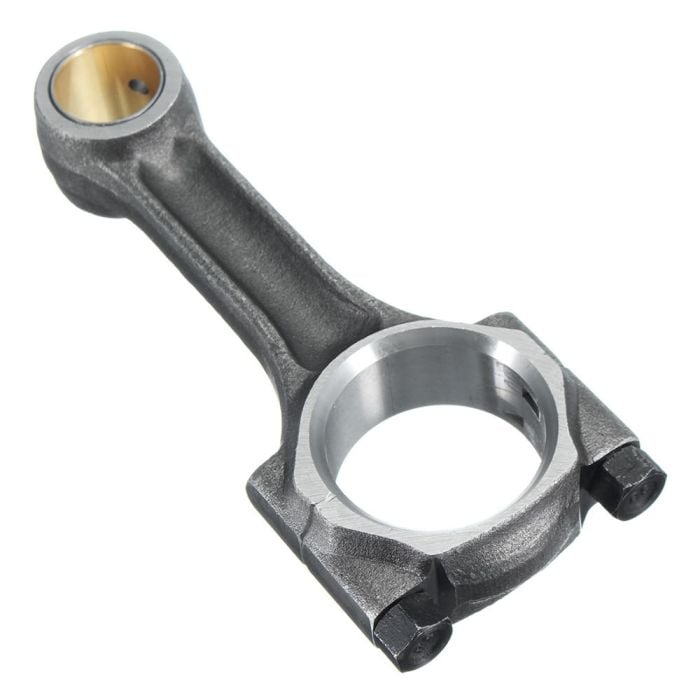Reduce downtime by using a well-maintained clp engine.
Reduce downtime by using a well-maintained clp engine.
Blog Article
How a Clp Engine Can Boost Efficiency in Numerous Industries
The advent of CLP engines marks a considerable change in operational efficiency across numerous sectors, driven by their capability to maximize gas consumption and reduce downtime. As organizations significantly focus on sustainability alongside efficiency, the function of CLP engines ends up being also extra crucial.
Summary of CLP Engines
CLP engines, or Constant Liquid Propellant engines, represent a substantial innovation in propulsion modern technology, specifically for area applications. These engines utilize a continuous feed system that enables the continual expulsion of propellant, causing improved effectiveness and performance contrasted to conventional strong or hybrid propulsion systems. By preserving a constant circulation of liquid propellant, CLP engines can achieve extra exact thrust control, which is crucial for steering spacecraft in different objective scenarios.
The layout of CLP engines integrates innovative products and ingenious gas administration systems. clp engine. This results in lowered weight and raised dependability, important factors for long-duration room objectives. The continual procedure minimizes the threat of combustion instability, an usual difficulty in conventional rocket engines.

Advantages in Production
The production of Continual Fluid Propellant (CLP) engines offers numerous notable advantages that enhance both performance and cost-effectiveness. Among the key advantages is the structured manufacturing procedure, which decreases the complexity related to standard propulsion systems. By using liquid propellant, producers can accomplish greater precision in engine performance, leading to maximized power result and reduced waste.
Additionally, CLP engines help with a higher degree of modularity, enabling simpler combination right into numerous manufacturing lines. This adaptability can considerably lower preparations and boost overall functional versatility. Making use of CLP technology likewise has a tendency to reduce the requirement for comprehensive maintenance as a result of fewer moving parts, which equates into lowered downtime and functional prices.

Applications in Logistics
Leveraging Constant Fluid Propellant (CLP) engines in logistics offers significant advantages in operational efficiency and reliability. These engines provide a robust service for various transportation needs, making it possible for the smooth activity of items throughout substantial ranges. The intrinsic style of CLP engines enables constant power outcome, which translates right into smoother and a lot more predictable transportation schedules.
Among the vital applications of CLP engines in logistics remains in durable freight transport, where they can drive both ground and airborne lorries. Their capacity to keep high efficiency under varying load problems makes certain that distribution timelines Full Report are satisfied, thus enhancing consumer contentment. Furthermore, CLP engines can be integrated right into automated logistics systems, promoting real-time monitoring and optimizing course preparation.
Furthermore, the sturdiness of CLP engines decreases upkeep downtime, enabling logistics business to maximize their functional abilities. This is particularly beneficial in warehousing procedures, where efficiency in taking care of and delivering goods is critical. As logistics remains to progress, the combination of CLP engines stands for a forward-thinking technique that not just enhances performance however also sustains the industry's growing needs for dependability and speed.
Influence on Energy Efficiency
Exactly How do Continuous Liquid Propellant (CLP) engines boost energy effectiveness in transport? CLP engines use a constant circulation of liquid gas, maximizing combustion processes and keeping a stable thrust result. This design reduces energy losses connected with traditional combustion engines, where gas distribution can vary and cause inadequacies.
The continuous operation of CLP engines enables an extra reliable thermal cycle, resulting in higher certain impulse contrasted to conventional engines. clp engine. This equates to minimized gas intake for the a fantastic read same amount of work done, significantly decreasing functional prices across numerous transportation industries, consisting of aviation and maritime sectors
Additionally, the capacity of CLP engines to keep ideal performance under differing lots problems decreases the need for constant acceleration and slowdown, further enhancing fuel performance. Boosted energy effectiveness not just adds to cost savings but also results in lower greenhouse gas discharges, lining up with global sustainability goals.
Future Trends and Innovations
Emerging advancements in Continuous Fluid Propellant (CLP) engine modern technology promise to transform the landscape of transportation performance and sustainability. As sectors pivot toward greener options, CLP engines stand at the forefront, incorporating cutting-edge products and style methods that boost efficiency while lessening environmental impact.
Among one of the most appealing trends is the fostering of crossbreed systems that integrate CLP engines with renewable resource sources. This synergy can maximize gas usage and reduce exhausts, lining up with global sustainability objectives. Additionally, improvements in computational fluid characteristics (CFD) are promoting the layout of more aerodynamically reliable engines, causing decreased drag and boosted fuel performance.
Additionally, the growth of smart surveillance systems is set to boost operational effectiveness. These systems leverage information analytics and IoT technology to enhance engine efficiency in real-time, making sure that the engines run within their most efficient criteria.
As research proceeds to discover alternate propellant formulations-- such as biofuels and artificial gas-- the future of CLP engines looks promising. By taking advantage of these innovations, markets can not just improve their effectiveness yet additionally contribute substantially to a cleaner, extra sustainable future in transport.
Verdict
To conclude, CLP engines represent a Check This Out substantial advancement in effectiveness throughout numerous sectors. Their ability to optimize gas consumption and minimize functional prices, incorporated with a continuous feed system, enhances power outcome and operational dependability. The assimilation of innovative products and fewer moving parts lessens upkeep needs, while placement with sustainability objectives positions CLP engines as a critical innovation for the future. Continued advancement in this field promises more improvements in efficiency and ecological efficiency.
Report this page